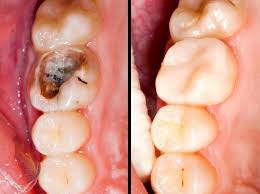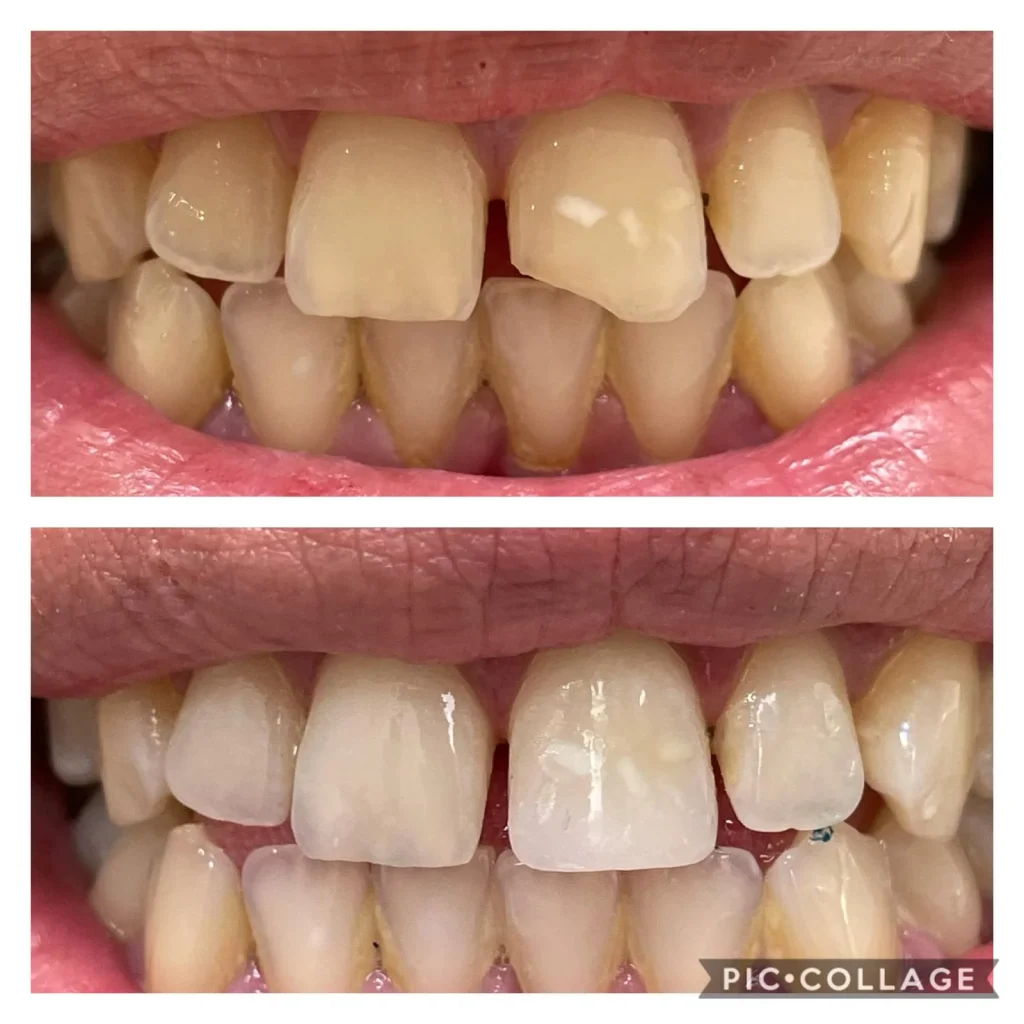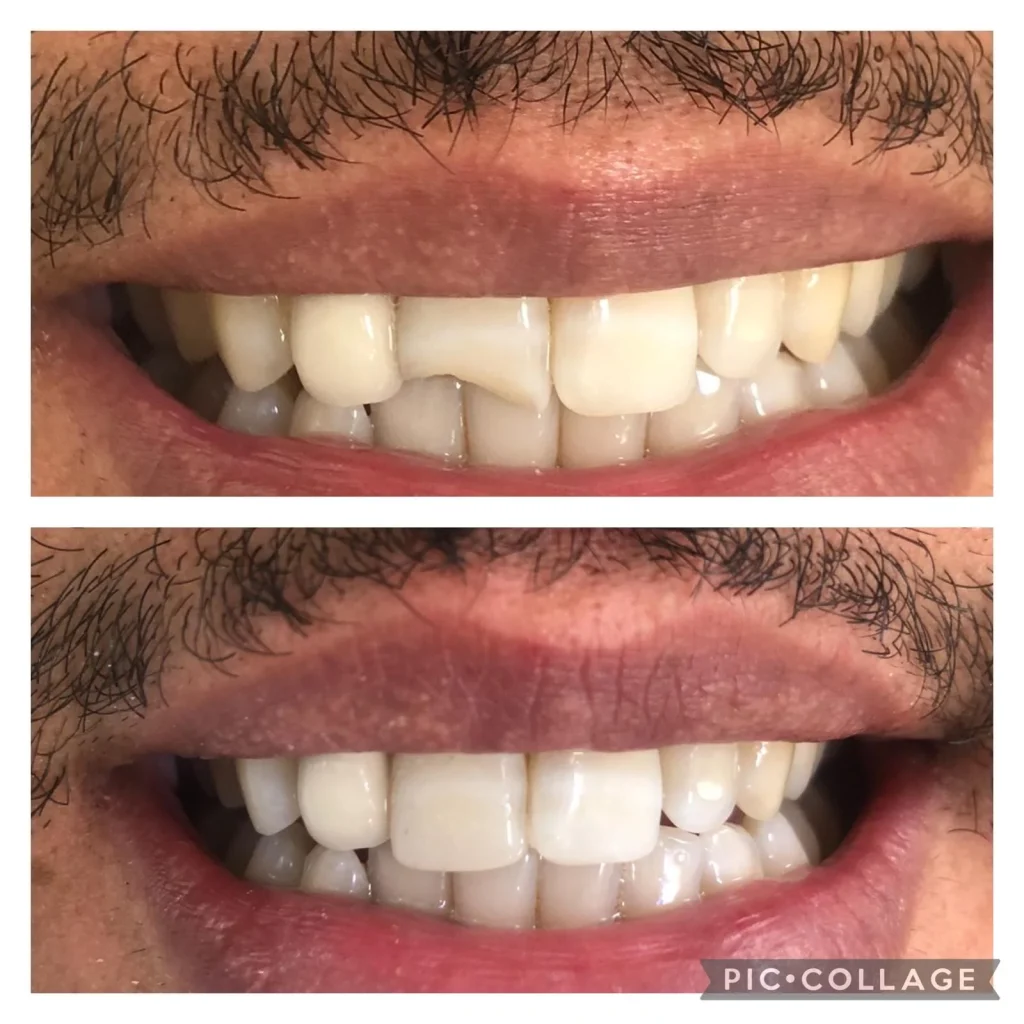composite filling
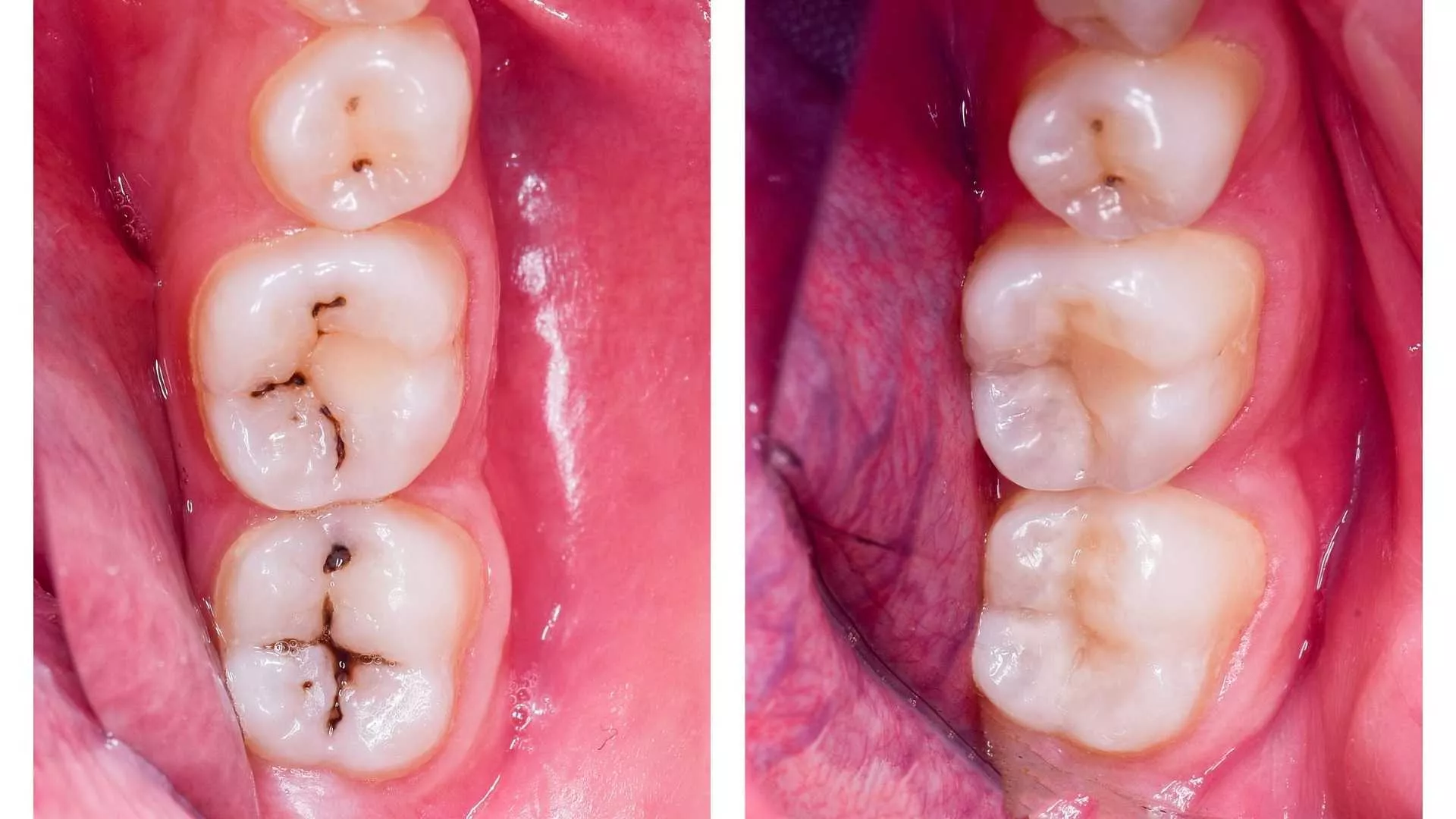
Composite fillings, also known as tooth-colored fillings, have revolutionized dental restorations with their aesthetic appeal and functional durability. They offer a versatile and reliable solution for cavities, cracks, and other minor dental issues, providing a seamless blend with the natural color of your teeth. This guide delves into the intricacies of composite fillings, covering their benefits, application process, care, and much more.
What are Composite Fillings?
Composite fillings are dental restorations made from a mixture of plastic resins and fine glass particles. Unlike traditional amalgam fillings, composite fillings are designed to match the color of your natural teeth, making them an attractive option for visible areas of your mouth.
Benefits of Composite Fillings
- Aesthetic Appeal: One of the most significant advantages of composite fillings is their ability to mimic the natural color of your teeth. This makes them virtually invisible, especially when used in the front teeth.
- Bonding Strength: Composite fillings bond directly to the tooth structure, providing additional support to the weakened tooth. This adhesion helps restore the tooth’s original strength and reduces the risk of further damage.
- Versatility: Composite fillings can be used for various dental repairs, including filling cavities, repairing chipped or cracked teeth, and even as a cosmetic improvement for discolored teeth.
- Minimal Tooth Preparation: The application of composite fillings often requires the removal of less tooth structure compared to amalgam fillings. This preserves more of the natural tooth, which is beneficial for long-term dental health.
- Less Sensitivity: Composite materials are less likely to cause tooth sensitivity to hot or cold temperatures, which is a common issue with metal fillings.
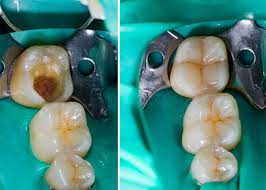
The Composite Filling Procedure
The procedure for placing composite fillings is relatively straightforward and typically completed in a single dental visit. Here’s a step-by-step overview:
- Preparation: The dentist begins by numbing the area around the affected tooth with a local anesthetic to ensure a pain-free experience. Once the area is numb, the decayed or damaged portion of the tooth is removed.
- Etching and Bonding: The tooth is then etched with a mild acidic solution to create a rough surface, which helps the composite material adhere better. A bonding agent is applied to the etched surface to facilitate the bonding process.
- Applying the Composite: The composite resin is applied in layers, with each layer being cured (hardened) using a special light. This process ensures a strong bond and allows the dentist to sculpt the filling to match the natural contours of the tooth.
- Finishing Touches: Once all layers are in place, the filling is shaped and polished to ensure a smooth surface that matches the surrounding teeth. The dentist checks your bite to ensure the filling does not interfere with your chewing.

Post-Procedure Care
Caring for composite fillings involves maintaining good oral hygiene and making mindful choices about your diet and habits. Here are some tips for ensuring the longevity of your composite fillings:
- Oral Hygiene: Brush your teeth at least twice a day with fluoride toothpaste and floss daily to prevent decay and maintain the health of your fillings.
- Dietary Considerations: Avoid excessive consumption of hard, sticky, or sugary foods, as these can damage or dislodge composite fillings. Be cautious with beverages that stain, such as coffee, tea, and red wine.
- Regular Dental Visits: Schedule regular check-ups with your dentist to monitor the condition of your fillings and overall dental health.
- Avoid Grinding: If you grind your teeth, especially at night, consider wearing a night guard to protect your fillings and teeth from excessive wear.
Durability and Lifespan
Composite fillings are durable and can last for many years with proper care. However, their lifespan can vary based on several factors:
- Location of the Filling: Fillings on front teeth, which are subjected to less pressure, generally last longer than those on molars, which bear the brunt of chewing forces.
- Oral Habits: Habits like teeth grinding or using your teeth as tools can reduce the lifespan of composite fillings.
- Diet: A diet high in sugary or acidic foods can lead to decay around the filling, compromising its integrity.
On average, composite fillings can last between 5 to 10 years, although many patients find their fillings last even longer with excellent oral hygiene and regular dental care.
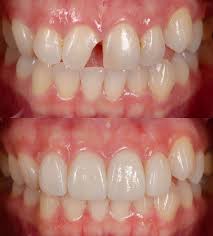
Composite Fillings vs. Amalgam Fillings
When choosing between composite and amalgam fillings, it’s essential to understand the key differences:
- Aesthetics: Composite fillings are tooth-colored and blend seamlessly with your natural teeth, making them ideal for visible areas. Amalgam fillings are silver and can be noticeable, especially in the front teeth.
- Bonding: Composite fillings bond directly to the tooth structure, providing additional support. Amalgam fillings do not bond to the tooth and require more removal of healthy tooth structure to hold in place.
- Durability: Amalgam fillings are known for their durability and can last 10 to 15 years or longer. Composite fillings, while durable, typically have a slightly shorter lifespan.
- Sensitivity: Composite fillings are less likely to cause sensitivity to temperature changes compared to amalgam fillings.
- Cost: Composite fillings are generally more expensive than amalgam fillings due to the materials used and the time required for placement.
Addressing Common Concerns
- Do Composite Fillings Hurt? The procedure for placing composite fillings is typically pain-free due to the use of local anesthesia. You may experience some sensitivity after the procedure, but this usually subsides within a few days.
- Can Composite Fillings Be Repaired? Yes, if a composite filling becomes damaged or worn, it can often be repaired or replaced by your dentist.
- Are Composite Fillings Safe? Composite fillings are considered safe and are widely used in dental practices. They do not contain mercury, which is a concern with amalgam fillings.
- Can Composite Fillings Be Used for Large Cavities? Composite fillings are best suited for small to medium-sized cavities. For larger cavities or areas with high chewing forces, other restorative options like crowns may be more appropriate.
Innovations in Composite Filling Technology
Advancements in dental technology continue to improve the quality and application of composite fillings:
- Nanocomposites: These materials incorporate nanoparticles, enhancing the strength and aesthetic properties of composite fillings. Nanocomposites offer superior wear resistance and polishability.
- Bulk-Fill Composites: These allow for faster placement by enabling dentists to fill cavities in larger increments, reducing chair time while maintaining the integrity and performance of the filling.
- Bioactive Composites: These materials release fluoride or calcium ions, promoting remineralization of the tooth structure and enhancing the overall health of the tooth.
Choosing the Right Dentist for Composite Fillings
Selecting a skilled and experienced dentist is crucial for achieving the best results with composite fillings:
- Experience and Training: Look for a dentist with extensive experience and specialized training in cosmetic and restorative dentistry.
- Patient Reviews: Check online reviews and testimonials to gauge patient satisfaction and the quality of care provided by the dentist.
- Technology and Techniques: Ensure the dental practice uses the latest technology and techniques for placing composite fillings.
- Consultation: Schedule a consultation to discuss your needs and expectations, and to evaluate the dentist’s approach and communication style.
Conclusion
Composite fillings offer a versatile, aesthetically pleasing, and durable solution for dental restorations. Their ability to blend seamlessly with natural teeth, combined with their bonding strength and minimal invasiveness, makes them an excellent choice for many patients. By understanding the procedure, benefits, and care requirements of composite fillings, you can make informed decisions about your dental health and enjoy a bright, healthy smile for years to come. Always consult with a qualified dentist to determine the best restorative option for your specific needs.
Related to read:
Best Oral Hygiene Practices For Optimum Oral Health.
Bruxism: Teeth grinding causes treatment and prevention.
How to keep your gums healthy and disease-free?
References
To ensure the information provided is accurate and up-to-date, the following sources were referenced:
- American Dental Association. (n.d.). Plaque and Tartar. Retrieved from ADA website
- Mayo Clinic. (n.d.). Dental Plaque. Retrieved from Mayo Clinic website
- National Institute of Dental and Craniofacial Research. (n.d.). Periodontal (Gum) Disease. Retrieved from NIDCR website

How Long Does a Composite Filling Last?
Composite fillings, also known as tooth-colored fillings, are known for their aesthetic appeal and functional durability. The longevity of a composite filling depends on various factors:
Average Lifespan
- Typical Duration: On average, composite fillings can last between 5 to 10 years. However, with proper care, they can sometimes last even longer.
- Longevity Factors: The lifespan of a composite filling is influenced by factors such as the location of the filling, oral hygiene practices, and the patient’s diet.
Influencing Factors
- Location: Fillings in areas of the mouth subjected to less pressure, such as the front teeth, tend to last longer than those in the molars, which experience heavy chewing forces.
- Oral Hygiene: Good oral hygiene practices, including regular brushing and flossing, can significantly extend the life of a composite filling by preventing decay around the filling.
- Diet: A diet high in sugary or acidic foods can increase the risk of decay and wear around the filling, reducing its lifespan.
- Habits: Habits like teeth grinding (bruxism) can cause composite fillings to wear down more quickly.
Are Composite Fillings Better?
Composite fillings have several advantages over other types of fillings, making them a popular choice among dentists and patients. However, their suitability can vary based on individual needs and circumstances.
Advantages of Composite Fillings
- Aesthetic Appeal: Composite fillings are tooth-colored and blend seamlessly with natural teeth, making them ideal for visible areas of the mouth.
- Bonding Strength: They bond directly to the tooth structure, providing additional support to the weakened tooth and reducing the risk of further damage.
- Minimal Invasiveness: The application process requires less removal of healthy tooth structure compared to amalgam fillings.
- Versatility: Composite fillings can be used for various dental repairs, including filling cavities, repairing chipped or cracked teeth, and cosmetic improvements.
Comparison with Other Fillings
- Amalgam Fillings: While amalgam fillings are more durable and last longer (10 to 15 years or more), they are silver in color and can be noticeable, especially in the front teeth. They also require more removal of healthy tooth structure.
- Gold Fillings: Gold fillings are extremely durable and can last a lifetime, but they are expensive and require multiple visits. They are also noticeable due to their color.
- Ceramic Fillings: Ceramic fillings offer excellent aesthetics and durability but are more expensive than composite fillings.
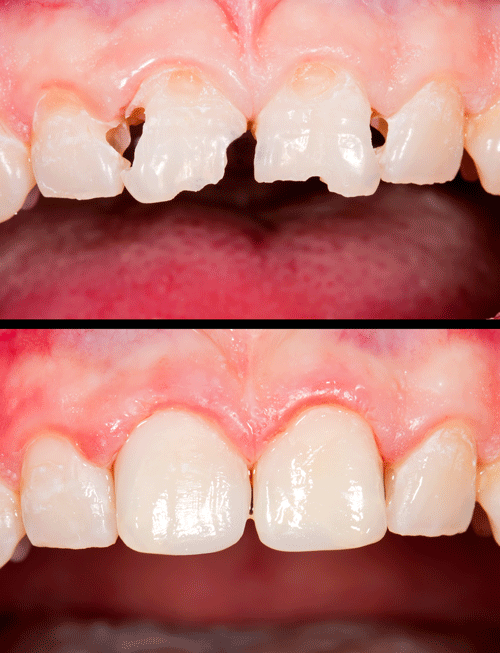
What Are the Disadvantages of Composite Fillings?
While composite fillings offer numerous benefits, they also have some disadvantages that should be considered:
Durability
- Less Durable: Composite fillings are generally less durable than amalgam and gold fillings, especially in areas with high chewing forces.
- Frequent Replacement: They may need to be replaced more frequently, particularly if placed in molars.
Cost
- Higher Cost: Composite fillings are typically more expensive than amalgam fillings due to the materials used and the time required for placement.
Technique Sensitivity
- Technique-Dependent: The success of composite fillings is highly dependent on the dentist’s skill and the technique used. They require a clean and dry environment for optimal bonding.
Potential for Staining
- Staining: Composite fillings can stain over time, particularly if exposed to coffee, tea, red wine, or tobacco. Regular polishing can help maintain their appearance.
Is Composite Filling Painful?
The procedure for placing a composite filling is generally not painful due to the use of local anesthesia. Here’s what to expect:
During the Procedure
- Local Anesthesia: Your dentist will administer a local anesthetic to numb the area around the affected tooth, ensuring that you do not feel pain during the procedure.
- Comfort: Most patients experience little to no discomfort during the actual filling process.
After the Procedure
- Sensitivity: It is common to experience some sensitivity to hot, cold, or pressure after the filling, which usually subsides within a few days to a week.
- Pain Management: Over-the-counter pain relievers, such as ibuprofen or acetaminophen, can help manage any post-procedure discomfort. If pain persists or is severe, contact your dentist.
Which Filling is Best for Teeth?
The best type of filling for your teeth depends on various factors, including the location of the cavity, the size of the cavity, your aesthetic preferences, and your budget.
Composite Fillings
- Best For: Aesthetic restorations, visible areas of the mouth, small to medium-sized cavities.
- Advantages: Tooth-colored, minimally invasive, versatile.
- Disadvantages: Less durable than amalgam, higher cost.
Amalgam Fillings
- Best For: Back teeth, areas with high chewing forces, larger cavities.
- Advantages: Highly durable, cost-effective.
- Disadvantages: Silver in color, requires more tooth removal.
Gold Fillings
- Best For: Patients seeking a long-lasting solution and willing to invest in a premium option.
- Advantages: Extremely durable, long-lasting.
- Disadvantages: Expensive, noticeable color, multiple visits required.
Ceramic Fillings
- Best For: Patients seeking a natural-looking and durable option for visible teeth.
- Advantages: Excellent aesthetics, durable, stain-resistant.
- Disadvantages: Expensive, can cause wear on opposing teeth.
Can You Eat After a Composite Filling?
Yes, you can eat after a composite filling, but there are some important considerations to keep in mind:
Immediate Eating
- Wait for Anesthesia to Wear Off: It’s crucial to wait until the local anesthesia wears off completely before eating to avoid accidentally biting your tongue, cheek, or lip.
- Soft Foods: Start with soft foods that don’t require much chewing, such as yogurt, mashed potatoes, and soups.
Post-Procedure Care
- Avoid Hard and Sticky Foods: For the first 24 hours, avoid hard and sticky foods that can stress the new filling.
- Chew Carefully: Chew on the opposite side of your mouth from where the filling was placed to reduce the risk of dislodging the filling.
- Temperature Sensitivity: Be cautious with very hot or cold foods and drinks, as your tooth may be sensitive for a few days after the procedure.
Conclusion
Composite fillings offer a blend of aesthetic appeal, bonding strength, and versatility, making them a preferred choice for many dental restorations. Understanding their benefits, potential disadvantages, and proper care is essential for maintaining their effectiveness and longevity. While composite fillings are generally not painful and allow for immediate post-procedure eating, choosing the best filling type depends on individual needs and circumstances. Consulting with a qualified dentist will help determine the most suitable option for your dental health, ensuring a bright, healthy smile for years to come.




